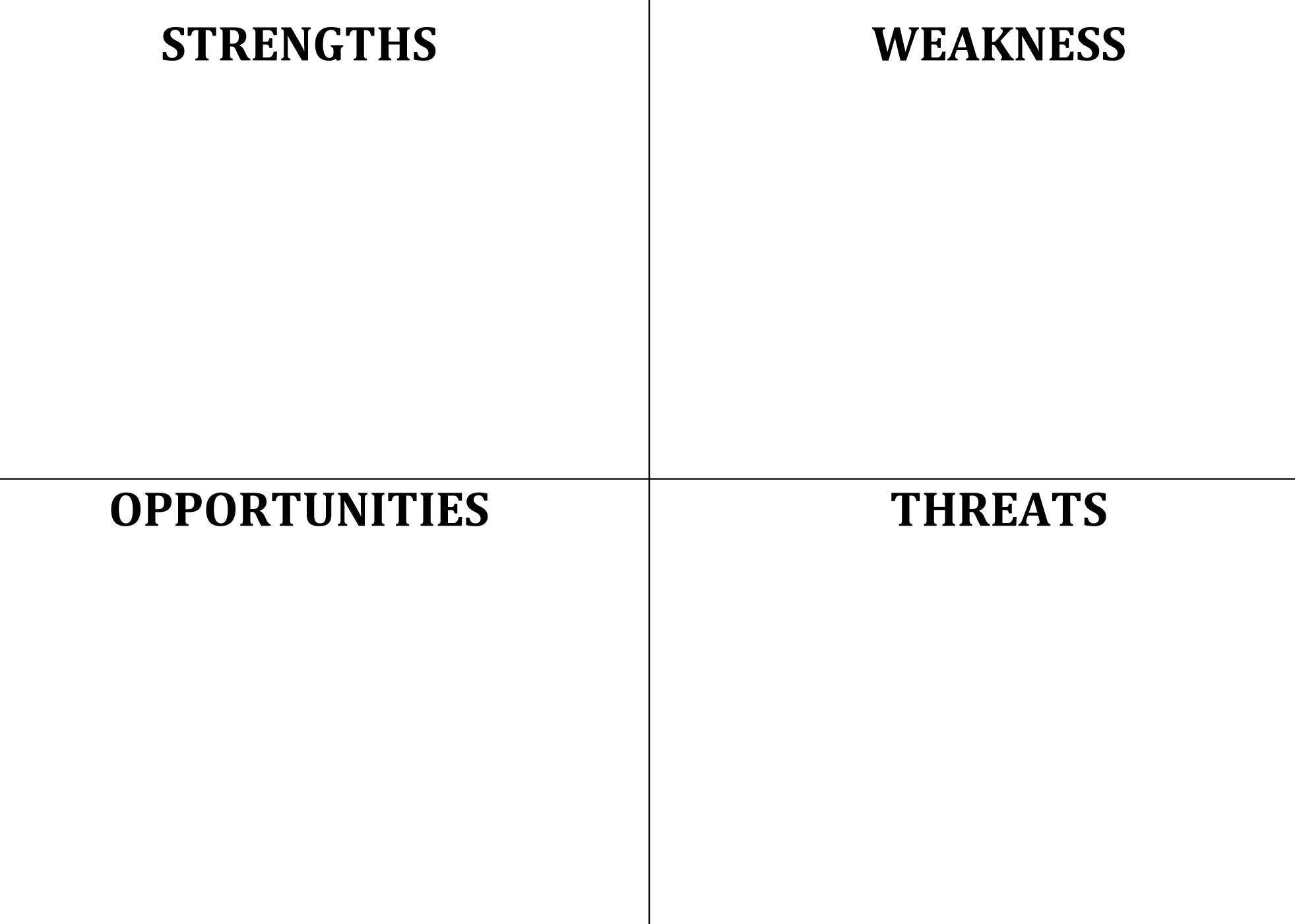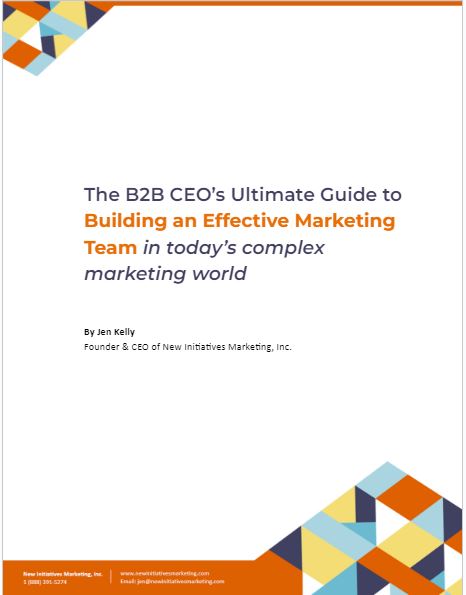Sometimes, staring down the face of a new project is daunting, especially if you or your team hasn’t done it before. One of the ways to get around this, is to do a SWOT analysis. It helps you to see the positives about your team/company/position, and helps you to think critically about what some of the problems are or may materialize in the future.
SWOT stands for Strengths, Weaknesses, Opportunities, Threats. There are plenty of templates out on the web that will help you perform this analysis. For me, I’ve always found that it is the thinking around answering these questions which is most helpful, not the fancy template. A simple Word doc like the one pictured here is all you need to get started.
Some see this as a pro/con chart on steroids. I see their point. Again, it’s the mental clarity you get about your project after running a SWOT analysis that is most useful.

Strengths
Your mom makes the best lemonade, you know this because all the neighbours and kids tell you so. You’ll have a star product to sell. This is a strength. The corner where you want to set up your stand has a lot of pedestrian traffic and is like the neighbourhood “town square”. You can imagine getting a lot of walk-by traffic stopping to check out your stand. This is a strength.
Weaknesses
All you will sell is lemonade so if someone wants something else to drink, they are out of luck. You and three other kids will take turns at the stand and you’re not sure about one of the kids being reliable for his “shifts”.
Opportunities
You’ll open this lemonade stand only for one weekend and notice there is a neighbourhood festival on a weekend in the future. Most of the neighbours will be participating and in the mood to buy things and support the festival. This is an opportunity.
Threats
Any of the other kids in the ‘hood could start a lemonade stand and steal your thunder. There may be other distractions at the festival that take attention away from your stand. At some point your mom may get tired of making lemonade and tell you that is it. These are threats to your project.
I picked a simple example from childhood, but I hope you get the picture. Once you run through and answer “what could be a threat?” and “what are our strengths” it gives you a lot more clarity and confidence to take a first step to start your project.
While a SWOT analysis for a lemonade stand may be over the top for your average kid looking to fan his entrepreneurial streak this summer, how have you used this process in your work?


